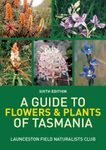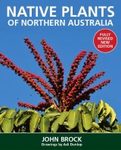![Eremophila and Allied Genera Eremophila and Allied Genera]()
Click to have a closer look
About this book
Contents
Related titles
About this book
This book is the result of thirty years research by Dr R.J.(Bob) Chinnock, the world authority in the family Myoporaceae, in which he has produced a new classification of the family resulting in the delimitation of 3 new genera, 94 new species and 37 new subspecies, and a revised infrageneric classification of the genera Eremophila and Myoporum. Treatment of species includes a detailed description as well as analytical drawings, notes on distribution, ecology, conservation status and relationships. Myoporum has small, almost regular, white, rarely pinkish, flowers, which may or may not have spotting on the lobes whereas Eremophila has large, brightly coloured, irregular shaped flowers that are often prominently spotted on the lobes or in the floral tube.
Myoporaceae are largely restricted to Australia where five of the seven genera occur, and of these all but one, Myoporum, are endemic. The two genera not represented in Australia, Bontia and Pentacoelium each contain a single species and restricted to the Caribbean (plants have recently been found in Florida, near Miami) and southern China, Japan and northern Vietnam, respectively. Myoporum is largely Australian but species extend into the Pacific (including New Zealand and Hawaii) and one species to the Indian Ocean. Species of Eremophila and Myoporum are considered important plants by the Aboriginal peoples, largely for the medicinal properties, but they are also used culturally and to a minor extent as a food source.
The high salt tolerance and drought resistance of Myoporaceae combined with the attractive flowers has made this family a very valuable horticultural resource in recent years, especially in drier parts of Australia and, to a lesser extent, elsewhere. The plants are very popular as Australian natives with long flowering times and diverse and showy flowers, often visited by birds and various insect groups.
Myoporum has been introduced into many countries like Portugal, Spain, Namibia, South Africa, south-western USA and Brazil for planting in coastal and low rainfall regions. A number of species have been used but by far the most widespread ones appear to be M. laetum and M. montanum. Myoporum is widely utilised as a hedging plant in coastal areas. It can be grown to various heights and forms a good barrier against on-shore winds so it is frequently planted around homes, caravan parks, and along paths for shelter belts, etc. It is also grown as a street tree and M. laetum, for example, has been observed in various places in southern Africa like Swakopmund, Cape Town and Johannesburg used in this manner.
Contents
lntroduction; History of the Myoporaccae; Morphology and Anatomy; Trichomes; Floral and Fruit Morphology; Palynology; Cytology and Cytogeography; Reproductive Biology; Distribution and Ecology; Phytochemistry and Toxicity; Traditional and Economic Uses; Horticultural Uses; Phylogeny and Relationships of the Myoporaccae; Taxonomic Treatment of the Family; Glossary; Bibliography; Index.
Customer Reviews

























